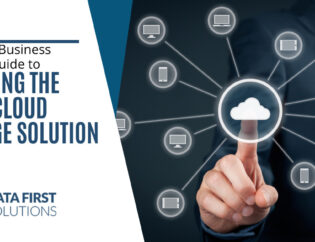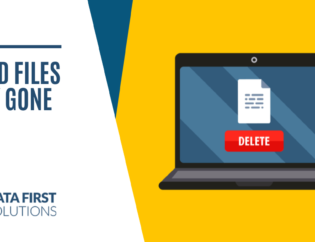
These scams have become increasingly sophisticated, and the fallout from falling for one can be devastating—from data breaches and financial losses to serious damage to your company’s reputation. That’s why it’s so important to ensure that the emails you and your team receive are from authentic sources.
In Canada, the negative consequences of phishing, such as financial penalties, have skyrocketed by 326%.
In this article, we’ll walk you through some practical tips and tricks to help you spot phishing attempts before they can cause any harm. From checking the sender’s address to being cautious with attachments, these straightforward steps will help you and your colleagues stay safe.
By following these email security best practices, you can protect your business’s valuable information and maintain the trust of your clients and partners. Let’s dive in and make sure your email security is rock solid!
Checking for Email Authenticity
Verifying the sender’s email address is the first line of defense against phishing attempts. Here’s what to watch out for:
Misspelled Sender Addresses
Phishing emails often use email addresses that closely resemble those of legitimate companies or individuals. Be wary of addresses with slight variations – an extra letter, a missing period, or a different domain name.
Generic or Unfamiliar Sender Names
Legitimate companies will typically use their brand name or the sender’s full name in the email address. Generic email addresses like “[email protected]” or unfamiliar names might be red flags.
Hover Over the Sender’s Name
Most email clients allow you to hover your mouse over the sender’s name to see the actual email address associated with it. This can reveal discrepancies between the displayed name and the actual sender.
Beware of Attachments
Attachments can be a breeding ground for malware and viruses. Here’s how to handle them with caution:
- Unexpected Attachments: Never open attachments from emails you weren’t expecting, even if the sender appears legitimate.
- Suspicious File Types: Be wary of attachments with unusual file extensions. Legitimate attachments from companies typically come in standard formats like .pdf, .docx, or .xlsx. If you see a file extension you don’t recognize, avoid opening it.
- Verify with the Sender: If you’re unsure about an attachment, especially from a seemingly familiar sender, contact the person directly to verify its legitimacy before opening it.
Phishing Identification Tips – Don’t Fall for the Bait!
Phishing emails often rely on urgency, fear, or a sense of reward to manipulate recipients. Here are some red flags to watch out for:
Urgency and Threats
Phishing emails often create a sense of urgency by pressuring you to act immediately. They might threaten account suspension, financial penalties, or loss of data if you don’t respond quickly.
Promises and Incentives
Be wary of emails offering unrealistically good deals, free gifts, or unexpected inheritances. These tactics aim to lure you into clicking on malicious links or divulging personal information.
Poor Grammar and Spelling Errors
While not always a foolproof indicator, legitimate companies typically invest in professional communication. Phishing emails might contain grammatical errors, typos, or awkward sentence structures.
Generic Greetings
Legitimate emails from companies will typically address you by name. Generic greetings like “Dear Customer” or “Dear User” could indicate a phishing attempt.
Suspicious Links
Don’t click on links within emails unless you’re absolutely sure of their legitimacy. Hover over the link to see the actual URL it directs you to. Beware of shortened links or URLs that appear different from what’s displayed.
The Challenge of AI-powered Phishing
The rise of AI has made phishing emails more sophisticated and harder to detect. AI can be used to:
- Craft Personalized Messages: AI algorithms can analyze social media data to personalize phishing emails with details relevant to the recipient, making them appear more convincing.
- Bypass Spam Filters: AI can generate grammatically correct and natural-sounding emails that bypass traditional spam filters that rely on keyword recognition.
- Mimic Writing Style: AI can analyze writing styles and replicate them, making phishing emails appear to be from legitimate sources like colleagues or superiors.
Staying Vigilant in the Face of Evolving Threats
While AI presents an additional challenge, here are some steps you can take to stay protected:
- Be Skeptical and Verify: Don’t assume any email is legitimate, especially if it requests personal information or urgent action. Verify the sender’s identity and the legitimacy of any links or attachments before clicking or opening them.
- Keep Software Updated: Maintain updated antivirus and anti-malware software on your devices. These programs can help detect and block malicious attachments or links.
- Enable Two-factor Authentication (2FA): 2FA adds an extra layer of security to your online accounts by requiring a second verification step to gain access to an account. This provides protection against stolen or leaked passwords.
- Train Employees Regularly: Knowledge is power and security in the case of phishing emails. Ensure employees receive refresher training regularly on how to identify and where to report phishing emails.
Need Help with Email Security Solutions?
Phishing through email, text, voice, and messaging remains a constant threat to your company’s cybersecurity. Data First Solutions can provide you with email security solutions and user training that will protect you from this ever-evolving threat.
Contact us today to schedule a consultation. Call 416-412-0576 or reach us online.









